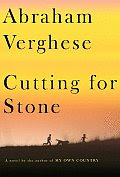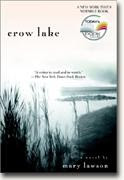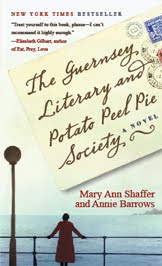

An ambitious and moving look at the human cost of Afghanistan's war-torn reality. It reveals the impact of the large historical and religious forces that deals with the decades of war, exploitation, and fundamentalist repression and its effects on the lives of five remarkable characters. Marcus, an English doctor who has lived in Afghanistan for many years, married an Afghan woman, Qatrina, and converted to Islam; David, a former cold war spy for the US, who has returned to Afghanistan to try to discover the fate of the boy he thinks of as his son; Lara, a Russian woman who is searching for her brother, Benedikt, a soldier who went AWOL during the Soviet invasion; Casa, a bitterly angry young jihadi eager to give his life for Islam; and James, an American special forces agent willing to go to any lengths to protect America from Islamic terrorists. Lyrical but not overwritten, the novel creates an unflinchingly clear picture of a country whose history of strife is still being written. This book is more complex than
A Thousand Splendid Suns, and should be read by anyone who loved that book and wants to move further. This book was orginally recommended to me by one of my daughers who heard a review on NPR. To be fair and honest, she liked
A Thousand Splendid Sons and
The Kite Runner, both by Khaled Hosseinim better than
Wasted Vigil. On the other hand, I found this to be a remarkable novel and one of the best books I have read in several years. It is increasingly relevant today given the ongoing war in Afghanistan.

 On the eve of the Second World War, a young Chinese painter, named Stephen, is sent to his family's summer home in Japan to recover from tuberculosis. He will rest, swim in the salubrious sea, and paint in the brilliant and shore light – it will be quiet and solitary. He is cared for by Matsu, a reticent housekeeper and a master gardener, and the “samurai” of the title – a man devoted to finding beauty in a cruel and arbitrary world. Stephen is a noble student. Over the course of a remarkable year, Stephen learns Matsu's secrets and gains not only physical strength, but also profound spiritual insight learning to appreciate Matsu's generous and nurturing way of life and to love Matsu's soulmate, Sachi, a woman afflicted with leprosy. But it is the four local residents he meets - a lovely young Japanese girl and three older people. What then ensues is a tale that readers will find at once classical yet utterly unique. Stephen has his own adventures, but it is the unfolding story of Matsu, Sachi, and Kenzo that seizes your attention and will stay with you a long time.
On the eve of the Second World War, a young Chinese painter, named Stephen, is sent to his family's summer home in Japan to recover from tuberculosis. He will rest, swim in the salubrious sea, and paint in the brilliant and shore light – it will be quiet and solitary. He is cared for by Matsu, a reticent housekeeper and a master gardener, and the “samurai” of the title – a man devoted to finding beauty in a cruel and arbitrary world. Stephen is a noble student. Over the course of a remarkable year, Stephen learns Matsu's secrets and gains not only physical strength, but also profound spiritual insight learning to appreciate Matsu's generous and nurturing way of life and to love Matsu's soulmate, Sachi, a woman afflicted with leprosy. But it is the four local residents he meets - a lovely young Japanese girl and three older people. What then ensues is a tale that readers will find at once classical yet utterly unique. Stephen has his own adventures, but it is the unfolding story of Matsu, Sachi, and Kenzo that seizes your attention and will stay with you a long time. 












 Jon Krakauer's literary reputation rests on insightful chronicles of lives conducted at the outer limits. In Under the Banner of Heaven he shifts his focus from extremes of physical adventure to extremes of religious belief within our own borders. At the core of his book is an appalling double murder committed by two Mormon Fundamentalist brothers, Ron and Dan Lafferty, who insist they received a revelation from God commanding them to kill their victims. Beginning with a meticulously researched account of this "divinely inspired" crime, Krakauer constructs a multilayered, bone-chilling narrative of messianic delusion, savage violence, polygamy, and unyielding faith. Krakauer takes readers inside isolated communities in the America, Canada, and Mexico, where some 40,000 Mormon Fundamentalists believe the mainstream Mormon Church went unforgivably astray when it renounced polygamy. Defying both civil authorities and the Church of Latter-day Saints establishment in Salt Lake City, the leaders of these outlaw sects are zealots who answer only to God. However, Under the Banner of Heaven is not an anti-Church of Jesus Christ of Latter-day Saints (Mormon) diatribe, as anyone who has actually read it can attest. There are several attempts in the book to confront basic issues in the context of modern society, i.e. How does one discriminate between one man's inspiration and that of another? What's the role of obedience in society? What are the consequences of total obedience? Krakauer could have written this book about any fundamentalist religious community. He just happened to pick The Church of Jesus Christ of Latter-day Saints. Every religion has stories like these--to pick them out and then declare that they represent the mainstream misses the point--namely that every society has to deal with its fringes and some do so better than others.
Jon Krakauer's literary reputation rests on insightful chronicles of lives conducted at the outer limits. In Under the Banner of Heaven he shifts his focus from extremes of physical adventure to extremes of religious belief within our own borders. At the core of his book is an appalling double murder committed by two Mormon Fundamentalist brothers, Ron and Dan Lafferty, who insist they received a revelation from God commanding them to kill their victims. Beginning with a meticulously researched account of this "divinely inspired" crime, Krakauer constructs a multilayered, bone-chilling narrative of messianic delusion, savage violence, polygamy, and unyielding faith. Krakauer takes readers inside isolated communities in the America, Canada, and Mexico, where some 40,000 Mormon Fundamentalists believe the mainstream Mormon Church went unforgivably astray when it renounced polygamy. Defying both civil authorities and the Church of Latter-day Saints establishment in Salt Lake City, the leaders of these outlaw sects are zealots who answer only to God. However, Under the Banner of Heaven is not an anti-Church of Jesus Christ of Latter-day Saints (Mormon) diatribe, as anyone who has actually read it can attest. There are several attempts in the book to confront basic issues in the context of modern society, i.e. How does one discriminate between one man's inspiration and that of another? What's the role of obedience in society? What are the consequences of total obedience? Krakauer could have written this book about any fundamentalist religious community. He just happened to pick The Church of Jesus Christ of Latter-day Saints. Every religion has stories like these--to pick them out and then declare that they represent the mainstream misses the point--namely that every society has to deal with its fringes and some do so better than others. 















